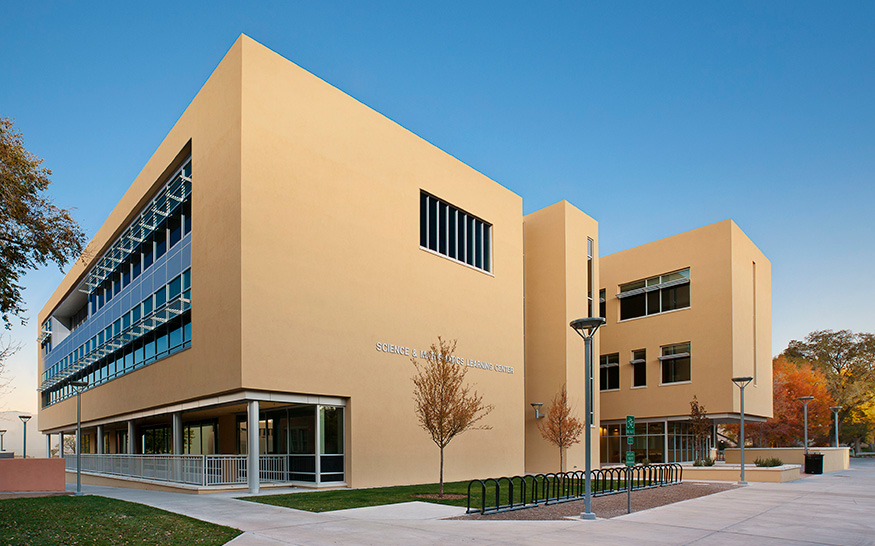Chemistry Dept. Facility & Resources

Environment – Contribution to Success
The facilities and other resources that are available at The University of New Mexico Department of Chemistry and Chemical Biology include the spectroscopic, biochemical, computational, IT, and space needs necessary to support the UNM FIRST program. Video and voice telecommunication are made via Zoom or Skype to communicate with collaborators. The intellectual and educational environment available to the faculty at UNM is enhanced by collaborative opportunities with extramurally funded PI's in numerous diverse fields including Chemical Engineering, Earth and Planetary Sciences, Biology, the College of Pharmacy, and the UNM School of Medicine. Los Alamos and Sandia National Laboratories provide an additional and unique stimulating and collaborative research environment.
Laboratories
We have recently moved into a newly renovated state-of-the-art laboratory space in the Chemistry Department's Riebsomer wing. There are currently four unoccupied research laboratories consisting of a 1600 sq. ft. preparatory lab which includes segregated desk space for 12 research assistants/associates and associated computers, 3 gloveboxes, 8 hoods, and solvent stills. Additionally, the following are shared facilities: (1) a 2000 sq. ft. shared spectroscopic facility that houses a Raman and pulsed laser laboratory, (2) a 1000 sq. ft. laboratory that houses two UV-Vis-NIR spectrometers and cryostats; an Edinburgh Instruments FLS980 research-grade modular fluorimeter; an LP920 laser flash photolysis system maintained by Prof. Rack, and (3) a 1600 sq. ft. magnetic spectroscopy laboratory that is dedicated to variable-temperature, variable-field (VTVH) MCD and VT multifrequency EPR spectroscopies. The Raman system employs PI Acton SpectraPro SP-2556 500mm focal length Imaging Spectrograph with a triple grating turret and PI/Acton Spec-10:100B back-illuminated 1340 x 100 pixel Digital CCD Spectroscopy System with a cryogenically cooled camera head. Coherent Innova Ar+ and Kr+ion lasers, and a titanium:sapphire-dye laser provide Raman excitation sources (a Verdi 10W diode pump laser and Mira titanium:sapphire laser have recently been purchased). This allows for virtually continuous wavelength operation in the near-IR and visible regions of the spectrum. Our ability to excite into the red-NIR is of great benefit in the assignment of low energy ligand field and charge-transfer excited states and to avoid fluorescence problems. Our MCD facility consists of Jasco-J700 (UV-vis) and J200 (vis-NIR) spectropolarimeters and a new Oxford Instruments SM4000 8 Tesla magneto-optical cryostat. The MCD spectrometer is built around two Jasco spectropolarimeters that allow us to probe excited states in the 200nm-2.5μ region. The optical configuration is such that the two spectropolarimeters are mounted on a rail assembly, allowing data to be collected in the full 200nm-2.5μ region on the same sample. Our 7 Tesla variable-temperature (1.8-300K), variable-field magneto-optical cryostat is equipped with two sample rod mounted temperature sensors above and below the sample to monitor the evolution of any thermal gradients during data collection. All of the support hardware for this instrument is custom designed. We have two Hitachi UV-Vis-NIR scanning spectrometers (U-3501 and U-4100L) and Janis optical cryostats that can be used on CW Raman systems, PL instruments, and low-temperature (2-330K and 77-300K) optical spectroscopy. All of our laboratory systems are computer interfaced for easy data collection/manipulation.
